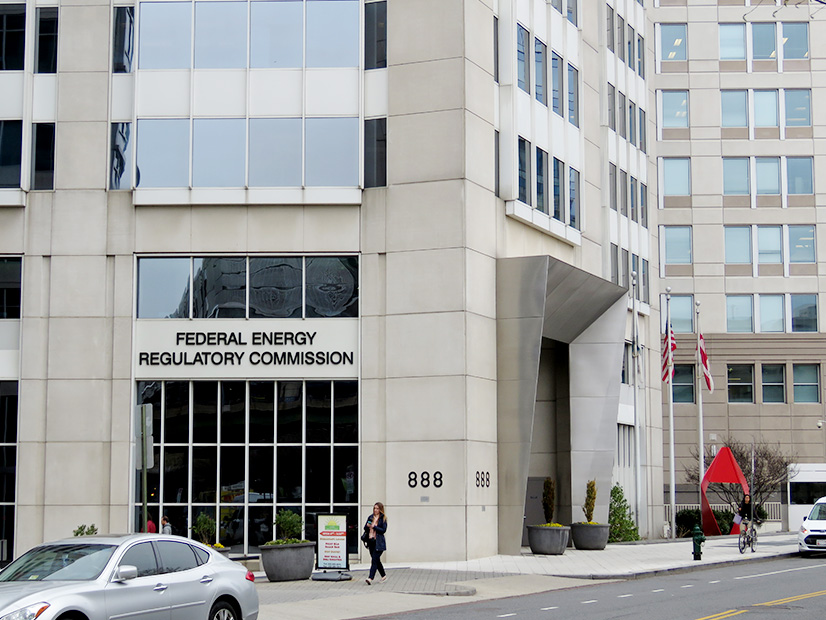The D.C. Circuit Court of Appeals on Feb. 12 heard oral arguments on FERC’s approval of the Commonwealth LNG facility in Cameron, La.
The case proceeds after the Biden administration paused new applications for liquified natural gas (LNG) export facilities in the U.S. (23-1069).
FERC approved the Commonwealth project in late 2022. It would consist of 9.3 billion cubic feet per day of export capacity on 150 acres along the west bank of the Calcasieu Ship Channel, near three existing LNG export facilities and others being planned.
In approving the project, FERC disregarded its potential to raise Louisiana’s greenhouse gas emissions by 1.7% on its own. The commission also ignored the environmental justice impact of the facility, which would be located on a heavily industrialized slice of the Gulf Coast, according to environmental groups Natural Resources Defense Council, Sierra Club, the Center for Biological Diversity and Healthy Gulf.
FERC’s rules around approving projects that influence climate change are far from clear, but it has ruled on such impact before, Sierra Club attorney Nathan Matthews said during the hearing. In a case involving Northern Natural Gas Pipeline, it said 315 tons of GHG emissions per year was well below any threshold it would consider.
“FERC could have done the same here where the 3.6 million tons per year of emissions are 36 times FERC’s draft threshold, which itself was equal to or higher than every other threshold any other agency proposed,” Matthews said.
The commission has drafted rules amending how it processes natural gas projects, but they have not advanced since former Chair Richard Glick released them in 2022 and then had to withdraw them after criticism from the industry and Capitol Hill.
The proposed facility would release 550 tons per year of nitrogen dioxide, which is harmful at any level and will cause the area around the terminal to exceed EPA’s limit for the gas in air quality standards, Matthews said.
“FERC simply misunderstands cumulative effects,” Matthews said. “FERC concluded that there would be no cumulative impact problem here because the individual incremental impact of this project was individually insignificant. But the central thrust of the cumulative impact regulation and doctrine is to guard against the death of 1,000 cuts.”
‘Incremental Impacts’
Judge Bradley Garcia asked whether the issue was FERC’s failure to label the nitrogen dioxide emissions as significant, which would have at least required it to explain why the facility should move forward regardless.
“For every impact you identify as significant, you have to discuss mitigation of that impact,” Matthews said. “And here, we think that they could have redesigned the terminal to reduce these emissions, even if they were going to still approve the terminal.”
A decision from the D.C. Circuit last year in a case the Center for Biological Diversity brought against FERC’s approval of an LNG facility in Alaska clearly laid out what the regulator had to do under the Natural Gas Act in its review of Commonwealth LNG, said FERC Attorney Susanna Chu.
“Because, like this case, it’s a purely Section Three terminal case, there’s no Section Seven pipeline involved,” Chu said, referring to relevant sections of the Natural Gas Act. “So, the standard here is that the commission must approve the terminal proposal unless it makes a finding that the terminal is actually inconsistent with the public interest.”
Chu was asked why FERC did not follow its finding in Northern Pass and determine that the 3.6 million tons of annual CO2 emissions from Commonwealth LNG are significant. The 100,000 tons per year threshold was only a draft proposal and FERC has not adopted it, Chu said.
Judge Florence Pan asked whether there was any chance FERC would pick a threshold more than 36 times its proposal.
Chu said that FERC has yet to make any final decisions on the question, but Pan pressed on — asking whether the project’s emissions would be significant if it increased the state of Louisiana’s emissions by 20%.
“The issue with global climate change, as the commission explained in the environmental statement, is that there are incremental impacts,” Chu said. “And … you can’t attribute physical … global climate change impacts, such as sea level rise or other specific impacts, to a particular project. At least, the commission has not yet been able to identify a methodology that would allow it to do so.”
FERC actually did more work than it had on previous projects in quantifying the emissions from Commonwealth. Garcia asked whether any of that influenced its decision-making when it came to mitigating pollution.
The commission discussed climate change, but said it was unable to determine whether an individual project such as Commonwealth LNG would have a major impact on it, Chu said. Pan then said that it would seem easier to make an actual finding of significance and assess ways for the project to mitigate those impacts than to wind up in more litigation.
“It’s been something that the agency has been grappling with,” Chu said. “I mean, this is a bipartisan, independent commission. And we see from the different, the evolution of the cases, the commission is moving [toward] more and more information in the environmental analysis.”

